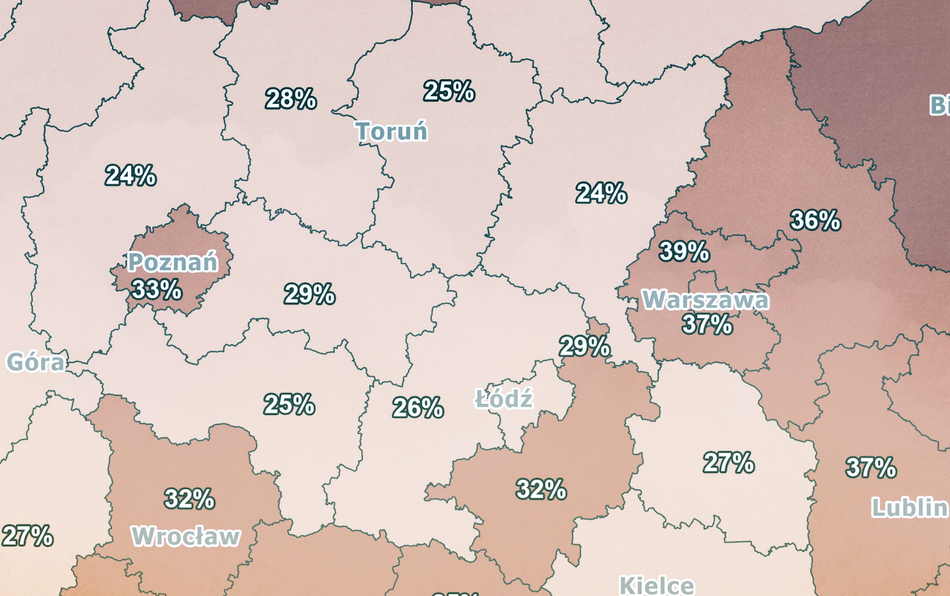Electoral system in the 1991-1997 elections for Senate
The 1991-1997 elections were conducted using the electoral system set out in the constitutional provisions and in the Electoral Ordinance for the Senate of the Republic of Poland. The electoral system for the Sejm underwent significant changes compared to the one used in 1989, particularly with regard to the electoral formula.
The electoral system (in its narrower sense) consists of the following elements:
- The structure of the electoral districts (their number, boundaries and the number of seats to be distributed in each district),
- The manner in which the election results are determined (this is determined by the electoral formula and the elements contained therein such as the electoral method or the statutory electoral thresholds),
- The method of voting (in other words, the powers of the voter when voting - how many votes he or she has, whether he or she can accumulate them, etc.).
Structure of electoral districts
In the 1991-1997 elections to the Senate of the Republic of Poland, the country's territory was divided into 49 multi-mandate electoral districts in which 100 senatorial seats were distributed.
The division into districts corresponded to the division of the country into provinces (of which there were 49 at the time).
In 47 districts, 2 senators each were elected, while in the two most populous districts (Warsaw and Katowice provinces), 3 were elected.
Significantly, the Senate elections did not implement the principle of equality (this principle did not apply to Senate elections in the constitutional provisions). The number of inhabitants per seat in each district varied widely.
The seats were divided in each constituency on the basis of the number of votes received by the candidates in the constituency.
The votes of Polish citizens voting outside Poland were counted in the district covering Warsaw Province.
Electoral formula
The 1991-1997 elections to the Senate of the Republic of Poland were conducted using a majority representation formula using the relative majority method in multi-mandate constituencies (block voting). The distribution of seats took place separately in each of the 49 electoral districts.
Method of voting
Each voter had votes equal to the number of senators elected in the district. He or she cast his or her votes for candidates of his or her choice from among those nominated in the district. A voter could not accumulate his votes (he could not, for example, cast all available votes for one candidate), but he was not obliged to use all the votes available to him. This was a growing problem in each successive election - an increasing proportion of voters used only one of their available votes. Candidates took their seats in the order of the number of votes obtained. If a seat became vacant, a by-election had to be held.
Maciej Onasz, based on: Onasz Maciej, Inżynieria wyborcza w Polsce od roku 1989, Łódź 2017; Ustawa z dnia 10 maja 1991 r. Ordynacja wyborcza do Senatu Rzeczypospolitej Polskiej, Dz.U. 1991 nr 58 poz. 246 (z późn. zm.).






